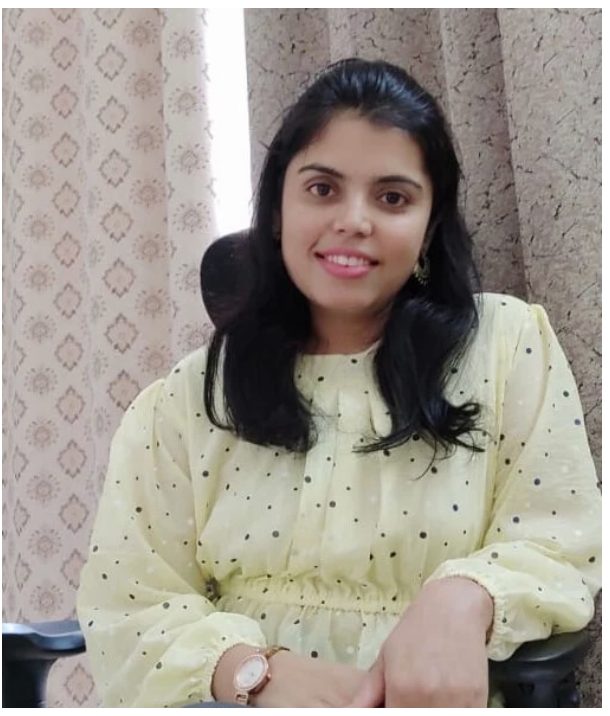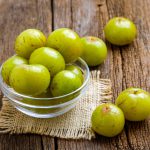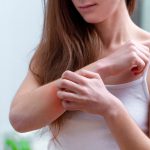Ashwagandha in Sanskrit means “smell of the horse” to correlate it with the strength of…
Read MoreWe are exposed to a huge number of pollutants on a daily basis, lead sedentary lives and consume junk food without giving it a second thought. Stress and sleep deprivation are routine. No wonder then, that dark circles, sun spots, and fine lines have become all too common. Across the world, there is a growing interest in the ayurvedic principles of skin care.
In the wellness sphere, there is a growing association between Ayurveda, anti-aging and cosmeceuticals. Modern research trends mainly revolve around principles of anti-aging activity described in ayurveda: vayasthapana (age defying), varnya (brighten skin-glow), sandhaniya (cell regeneration), vranaropana (healing), tvachya (nurturing), shothahara (anti-inflammatory), tvachagnivardhani (strengthening skin metabolism) and tvagrasayana (retarding aging). Ayurvedic skin care uses many rasayana plants such as amla (Emblica officinalis) and gotukola (Centella asiatica).[1]Datta, Hema Sharma, and Rangesh Paramesh. “Trends in aging and skin care: Ayurvedic concepts.” Journal of Ayurveda and integrative medicine 1, no. 2 (2010): 110.
Vayasthapana is an ingredient that nourishes the skin, ensures optimum physiological functioning and has an overall anti-aging property. It literally means maintaining youthfulness or arresting age. Vayasthapana herbs give overall support to the skin by keeping all three doshas in balance.
Gotu kola (Centella asiatica) is the foremost vayasthapana herb with anti-aging effects; one of its many properties is to enhance collagen synthesis.
Varnya are an important group of herbs that have an ability to enhance the complexion of the skin giving it radiance. In ayurveda, skin is considered youthful if it has varnya quality – a healthy glow.
Varnya herbs include sandalwood, vetiver, Indian madder and Indian sarsaparilla and so on.
Sandhaniya herbs help blend discontinued tissue, in healing and regenerative functions of the skin and repairing effects of aging. One such herb is the ‘sensitive plant’ (Mimosa pudica) that enhances healing and regeneration of the nerves by 30 to 40%.
Vrana ropana herbs enhance the deeper healing abilities in the skin. Vranaro pana herbs include Gotu kola and ‘sensitive plant’, and are known for their ability to heal wounds.
These herbs support moisture balance and provide overall nourishment to the skin. Gotu kola, silk cotton tree, costus and rose petal are the most widely used. Grapefruit extract and natural sources of Vitamins A, C and E nourish the skin and enhance the value of herbs.
By protecting the skin against allergens, inflammatory substances, chemicals and even stress, this group of herbs provides an anti-inflammatory effect that is essential in all anti-aging formulations.
Many factors in the external environment can cause inflammation or breakouts. Inflammation is considered a prime cause of aging. An inflamed site forms a micro-scar that over time develops into a wrinkle or blemish. Inflammatory mediators such as leukotrienes and prostaglandins, cytokines and growth factors target skin texture, integrity and tone. Containing inflammation at its root is therefore an effective anti-aging strategy.[2]Datta, Hema Sharma, and Rangesh Paramesh. “Trends in aging and skin care: Ayurvedic concepts.” Journal of Ayurveda and integrative medicine 1, no. 2 (2010): 110. While one can protect every other part of the skin by covering it with clothing, facial skin is always exposed. Shothahara herbs like rose petal, silk cotton tree and aloe vera have anti-inflammatory properties.
Gum resin exudates of Boswellia serrata have been used in the ayurvedic system of medicine in the management of several inflammatory conditions.
Tvachagnivardhani literally means to enhance the skin’s luster by enhancing its metabolism. As one ages, metabolism generally slows down, similarly, skin metabolism also weakens. If enzymes become imbalanced, metabolic toxins (ama) are created. Ama in the skin clogs the channels that lead to wrinkles, dryness and other signs of aging. Clogged channels also create dullness and lack of youthful glow. Applying gotu kola topically enhances enzyme principles and improves circulation. By removing ama and deep impurities, it helps prevent varicose veins, cellulitis, aging skin, and weakened immunity to allergens and skin diseases.
In Ayurveda the concept of anti-aging is embodied in rasayana. Tvagrasayana literally means ‘skin rasayana’ which refers to refined and powerful herbal formulae designed to prevent sickness and aging of the skin.
Amla (phyllanthus emblica) – a potent antioxidant, rich in Vitamin C, tannins and gallic acid – is foremost amongst the anti-aging drugs (vayasthaprana) and best amongst rejuvenating herbs. It has adaptogenic (rasayana) properties, is useful in aging (ajara), prolongs cell life (ayushprada), improves cell migration and cell binding (sandhaniya) and improves complexion (kantikara).
Before we delve deeper into how to go about preparing and applying face packs, let us understand the ayurvedic approach to skin care.
Ayurveda believes that the skin’s health depends on multiple factors such as its
The health of our blood (rakta), muscles (mamsa), and nutritional fluid (rasa) are often reflected in the condition of our skin.
Rakta or blood is intrinsically connected with liver function and plays a crucial role in detoxifying the body, while rasa supports all tissues, including skin tissues. Mamsa or muscles lend firmness to our skin.
Ayurvedic skincare rests on the concept of prakriti and dosha. According to ayurveda, from the time of our birth, we are governed by a specific combination of humours or doshas, such as vata, pitta, and kapha, that determine our constitution or prakriti.[3]Rotti, Harish, Kanive Parashiva Guruprasad, Jayakrishna Nayak, Shama Prasada Kabekkodu, Harpreet Kukreja, Sandeep Mallya, Jyothi Nayak et al. “Immunophenotyping of normal individuals classified … Continue reading
Ayurveda outlines three kinds of skin, vata, pitta, and kapha, and the related skin problems that are common to each. Here are some insights that have emerged from various studies:
Both vata and pitta skin types are dry in nature and warm to touch. They also show early signs of aging. A study found that 92% of people with the vata skin type had very dry (ruksha) skin.[4]Suwarna, Umarkar V., Vyas M. Deepak, Kulkarni B. Sheela, and Sathe D. Kalpana. “Variation in skin hydration on the basis of Deha Prakriti (body constitution): A cross-sectional observational … Continue reading
Each dosha demands a different kind of skin care ritual that addresses its specific concerns.
The herbal paste that is applied on the face to treat acne, pimples, scars, marks and pigments is known as ‘mukhalepam’ or face pack in ayurveda. There are various kinds of face packs described in ayurveda based on climatic changes which have nourishing, healing, cleansing, astringent and antiseptic properties.
While mukhalepam (face packs) form an integral part of ayurvedic skin care, it is important to remember that ayurveda is a holistic system that treats skin problems internally as well. The ayurvedic approach focuses on getting rid of toxins (ama) from the body and following a healthy daily routine (dinacharya).
Some basic ayurvedic dinacharya practices for healthy skin include the following:
Ayurveda recommends applying lepa (face pack) to one’s face a few minutes before bathing in the morning. It should be applied against the direction of hair growth, to maximize its exfoliating effect. The pack must be allowed to dry but it should not be left on for very long once it has dried. While removing the face pack, it is essential to moisten it and follow it up with an oil application.
In addition to applying the pack, protecting one’s skin from the sun and excessive heat, and avoiding negative emotions such as stress and anger also benefit the skin.
Did you know, ideally, our skin care regimen should not be the same all year round? Because our skin is affected by our immediate environment. According to ayurveda, ingredients of certain mukhalepam (face pack) are more effective in certain seasons. Here are a few examples:
Apart from these, you can also apply lemon juice on the face. However be cautious if you have severe acne or if your skin burns too much on application of lemon juice.
Udvartana or scarpering therapy is recommended by ayurveda to get rid of excess ama (toxins).
Application of mukhalepam not only removes toxins, dead skin cells, and impurities, it helps one fight pigmentation, undo sun damage, and brighten complexion. However, do note that ayurvedic formulations do not change skin colour. Every skin tone is beautiful and ayurveda only enhances the glow of one’s natural skin colour.
While these are broad guidelines followed for taking care of one’s skin externally, Ayurveda also places a great deal of importance on the internal health of an individual, as often, skin concerns can be traced to an underlying imbalance in the body. Ayurveda emphasizes the benefits of a balanced diet, adequate sleep, detoxification of the body and mind.
References
| ↑1, ↑2 | Datta, Hema Sharma, and Rangesh Paramesh. “Trends in aging and skin care: Ayurvedic concepts.” Journal of Ayurveda and integrative medicine 1, no. 2 (2010): 110. |
|---|---|
| ↑3 | Rotti, Harish, Kanive Parashiva Guruprasad, Jayakrishna Nayak, Shama Prasada Kabekkodu, Harpreet Kukreja, Sandeep Mallya, Jyothi Nayak et al. “Immunophenotyping of normal individuals classified on the basis of human dosha prakriti.” Journal of Ayurveda and integrative Medicine 5, no. 1 (2014): 43. |
| ↑4, ↑5 | Suwarna, Umarkar V., Vyas M. Deepak, Kulkarni B. Sheela, and Sathe D. Kalpana. “Variation in skin hydration on the basis of Deha Prakriti (body constitution): A cross-sectional observational study.” Ayu 39, no. 3 (2018): 127. |
| ↑6 | Datta, Hema Sharma, S. K. Mitra, Rangesh Paramesh, and Bhushan Patwardhan. “Theories and management of aging: modern and ayurveda perspectives.” Evidence-Based Complementary and Alternative Medicine 2011 (2011). |


With 13+ years of experience in Ayurvedic consultation & Allopathic treatment (ICU & General Hospital), Dr. Kalpana Dongare is adept in the treatment of infertility, PCOD, Joint disease, Skin diseases, etc with more than 95% patient follow up and more than 80% success rate. She is also an expert in all types of Panchkarma procedures.

Ashwagandha in Sanskrit means “smell of the horse” to correlate it with the strength of…
Read More
Pimples - we’ve all had them and we all hate them. And if you’ve ever…
Read More
Don’t all of us want healthy glowing skin? And while there is a ton of…
Read More
Most of us have experienced skin irritations at some point or the other. When the…
Read More